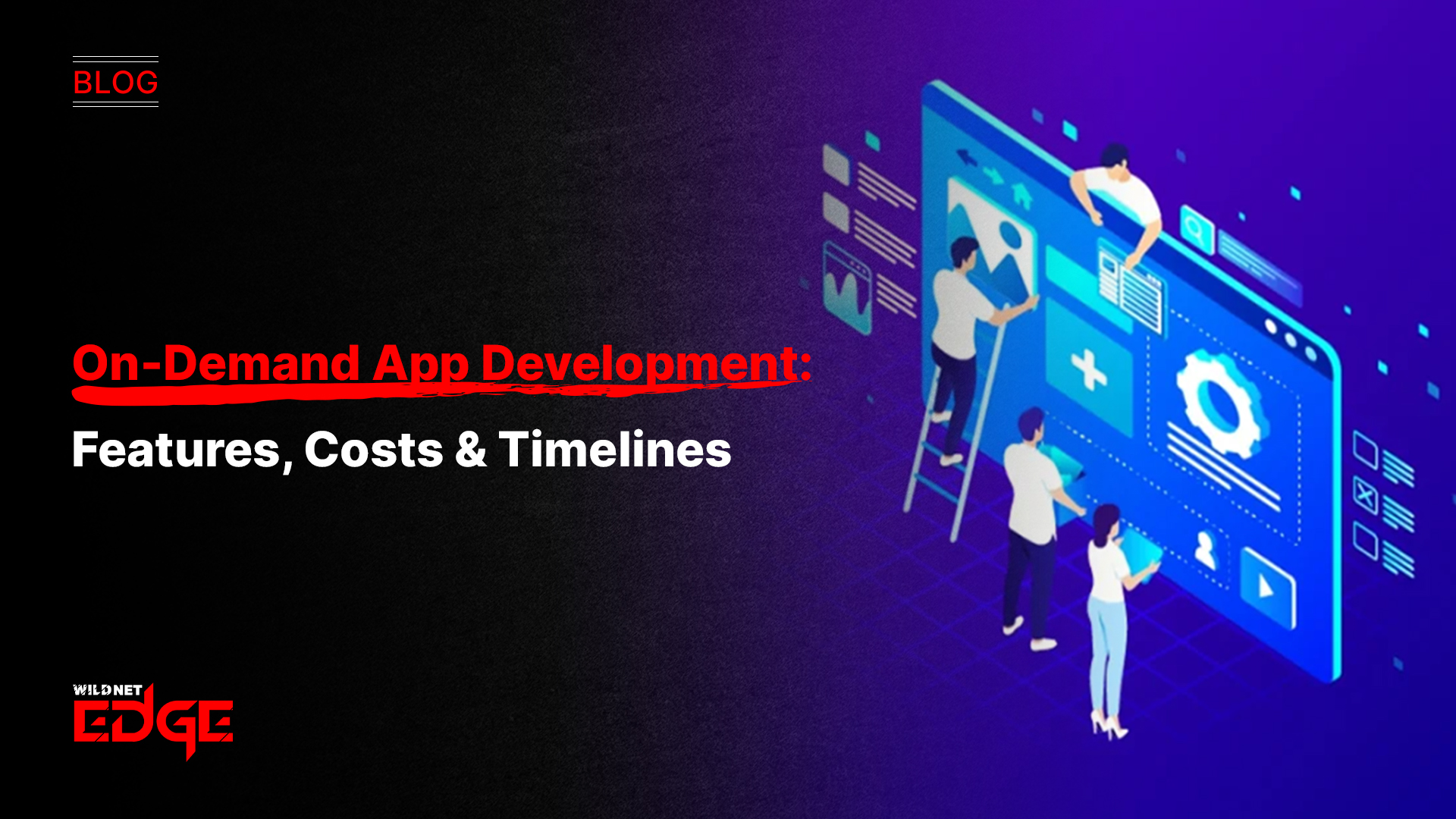TL;DR
This article explores the critical role of AI in feedback analysis, explaining how it transforms raw customer opinions into structured, actionable insights. It details how traditional manual analysis is slow and biased. The blog highlights how AI, using NLP and sentiment analysis, provides scalable customer feedback automation to process thousands of reviews, surveys, and support tickets in real-time. This approach uncovers AI-driven insights into customer pain points, emerging trends, and overall sentiment. Adopting AI in feedback analysis is a crucial strategy for businesses to make faster, data-driven decisions that improve products, enhance customer experience, and reduce churn.
If you’re running a business today, you’re sitting on a goldmine of customer feedback, app store reviews, survey comments, support tickets, and social media mentions, all packed with insights.
But let’s be honest: most of it never sees the light of day.
Why? Because digging through thousands of comments and reviews manually is slow, messy, and painfully inefficient. When someone finishes analyzing last month’s data, the insights are already outdated.
This is exactly where AI in feedback analysis changes the game. With customer feedback automation, you can instantly turn that flood of opinions into a clear, actionable picture.
The Problem with Manual Feedback Analysis
If you’ve ever tried manually going through survey responses in a spreadsheet, you know how exhausting it gets, and how easy it is to miss the big picture. Traditional feedback analysis struggles because:
- It’s Slow: By the time you’ve manually analyzed last month’s feedback, the insights are already outdated.
- It’s Not Scalable: It’s impossible to manually read 10,000 app store reviews or 50,000 support tickets. You end up sampling a tiny fraction, missing the big picture.
- It’s Biased: Human analysts inevitably bring their own biases, noticing the complaints they already agree with and missing the ones they don’t.
- It’s Inefficient: It’s an incredibly expensive use of your skilled employees’ time, which could be spent solving problems rather than just identifying them.
What Exactly is AI in Feedback Analysis?
AI in feedback analysis is the use of artificial intelligence, primarily Natural Language Processing (NLP) and machine learning, to automatically process, categorize, and analyze large volumes of unstructured customer feedback.
Instead of a human reading a review, an AI model can instantly:
- Understand the Sentiment: Is this review positive, negative, or neutral?
- Identify Key Topics: What is this review about? (e.g., “pricing,” “UI bug,” “slow shipping”).
- Detect Urgency: Is this customer just making a suggestion, or are they frustrated and at risk of churning?
The biggest shift? You move from analyzing 1% of your feedback to analyzing 100%, and doing it in real time. This is what customer feedback automation does, and it changes how fast and how confidently you make business decisions.
Key Business Benefits of Automating Feedback Analysis
Integrating AI into your feedback loop provides immediate, measurable value.
Get Faster, More Accurate Insights
AI can process thousands of text-based comments in minutes, not weeks. It can identify emerging trends instantly. If a new app update causes a bug, you’ll know about it from the surge in negative feedback on a specific topic today, not at the end of the month. This speed allows for proactive problem-solving.
Achieve 100% Coverage at Scale
Manual analysis forces you to rely on small, potentially unrepresentative samples. AI in feedback analysis allows you to analyze every single piece of feedback from every channel. This gives you a complete, unbiased view of customer sentiment and ensures the voices of the “silent majority” are heard, not just the loudest complainers.
Reduce Churn and Improve Loyalty
AI can connect feedback to your customer data. It can alert you when a high-value customer leaves a negative review or a frustrated support ticket. This allows your customer success team to proactively intervene and resolve the issue before the customer churns, building incredible loyalty. This is a core function of an AI Automation Agency.
Make Data-Driven Product Decisions
AI-driven insights are the ultimate tool for product managers. Instead of relying on a “hunch” or the most vocal salesperson, you can definitively say, “22% of our negative feedback last month was related to the confusing checkout process.” This data provides a clear, prioritized roadmap for product improvements that will have the biggest impact on customer satisfaction.
Key Applications of AI-Driven Customer Insights
How does this technology work in practice?
Automated Survey Analysis
Stop exporting survey responses to Excel. An AI model can instantly analyze all the open-text answers from your NPS or CSAT surveys and provide a dashboard showing, “Your Promoters love ‘product speed,’ but your Detractors are complaining about ‘missing features’ and ‘high price’.”
Intelligent Support Ticket Categorization
AI can read incoming support tickets and automatically categorize them, assign them to the right team, and even detect the urgency or customer frustration level. This is a powerful form of customer feedback automation. This is a feature that can be powered by an advanced AI Virtual Assistant.
Brand and Competitor Monitoring
AI tools can monitor social media and public review sites for mentions of your brand (and your competitors). This provides real-time AI-driven insights into what the market is saying, allowing you to react quickly to PR issues or capitalize on a competitor’s weakness.
AI in Feedback Analysis in Action: Case Studies
Case Study 1: A SaaS Company Prioritizing its Roadmap
- The Challenge: A B2B SaaS company had a long list of feature requests from users but no clear way to prioritize them. The product team was building features based on the “loudest” customer, not the most important needs.
- Our Solution: We implemented an AI in feedback analysis tool that collected feedback from all channels (support tickets, sales calls, surveys). The AI used topic modeling and sentiment analysis to categorize and rank every feature request by volume and user sentiment.
- The Result: The product team gained a data-driven roadmap. They discovered that a “minor” UI fix was actually the #1 source of user frustration, while a major feature they planned to build was rarely requested. They reprioritized their roadmap, leading to a 30% increase in user satisfaction scores.
Case Study 2: An eCommerce Brand’s Quality Control
- The Challenge: An online retailer was getting killed by negative product reviews, but the issues were buried in thousands of comments, and the team couldn’t identify the root cause fast enough.
- Our Solution: We built a custom AI model to analyze all incoming product reviews. The AI extracted key themes, identifying that 40% of negative reviews for their top-selling product mentioned the word “zipper.” This was one of our Custom Software Solutions.
- The Result: This AI-driven insights was a smoking gun. The company investigated and found a faulty batch of zippers from their supplier. They fixed the issue in their next manufacturing run, preventing thousands of future returns and saving their product’s reputation.
Our Technology Stack for AI Feedback Analysis
Building these systems requires a specialized stack.
- AI & NLP: Python (Scikit-learn, TensorFlow, spaCy, NLTK)
- Cloud AI Services: Google Cloud Natural Language AI, AWS Comprehend, Azure Cognitive Services
- Data Platforms: Databricks, Snowflake, Google BigQuery
- Data Visualization: Tableau, Power BI, Looker
- Automation: Zapier, Workato, or custom-built solutions
Conclusion
AI in feedback analysis is the key to unlocking the true value hidden within your customer conversations. It allows you to Automate Business Processes related to data analysis, enabling you to listen to all your customers at scale. By embracing customer feedback automation, you can make faster, smarter, and more data-driven decisions that will improve your product, delight your customers, and build a sustainable competitive advantage.
Ready to harness the power of your customer’s voice? At Wildnet Edge, our AI-first approach is at the core of what we do. We build intelligent systems that transform raw feedback into your most powerful strategic asset.
FAQs
Sentiment analysis tells you the emotion (positive, negative, neutral) of the feedback. Topic modeling tells you what the feedback is about (the key themes, e.g., “pricing,” “bug,” “customer support”). You need both for a complete picture.
Modern AI models, especially when trained on industry-specific data, are highly accurate. They can understand nuance, sarcasm, and context far better than simple keyword matching, providing reliable AI-driven insights.
Yes. This is a common application of AI in feedback analysis. Speech-to-text AI converts audio from support calls into text, and then NLP and sentiment analysis models analyze that text just like a written review.
The biggest mistake is “analysis paralysis” collecting the insights but failing to act on them. The goal of customer feedback automation is not to create prettier reports; it’s to create a fast loop between feedback and actionable change in your product or processes.
You can start small and cost-effectively. Use cloud-based AI APIs (like Google’s Natural Language API) that don’t require you to train your own models. You can send your survey responses or product reviews to the API and get instant sentiment and topic analysis back.
No, it empowers them. It automates 80% of manual “grunt work” (reading, tagging, counting) that bogs them down. This frees up your skilled product managers and researchers to focus on the 20% of high-value strategic work: “Why are users feeling this way?” and “What should we do about it?”
The first step is to consolidate your feedback. Pick one high-volume channel (like your support tickets or app store reviews). Then, a pre-trained AI tool (like an AI-powered data analysis platform or a cloud API) can be applied to that single source to see what patterns emerge. This “quick win” will often immediately reveal valuable insights.

Nitin Agarwal is a veteran in custom software development. He is fascinated by how software can turn ideas into real-world solutions. With extensive experience designing scalable and efficient systems, he focuses on creating software that delivers tangible results. Nitin enjoys exploring emerging technologies, taking on challenging projects, and mentoring teams to bring ideas to life. He believes that good software is not just about code; it’s about understanding problems and creating value for users. For him, great software combines thoughtful design, clever engineering, and a clear understanding of the problems it’s meant to solve.
 sales@wildnetedge.com
sales@wildnetedge.com +1 (212) 901 8616
+1 (212) 901 8616 +1 (437) 225-7733
+1 (437) 225-7733































